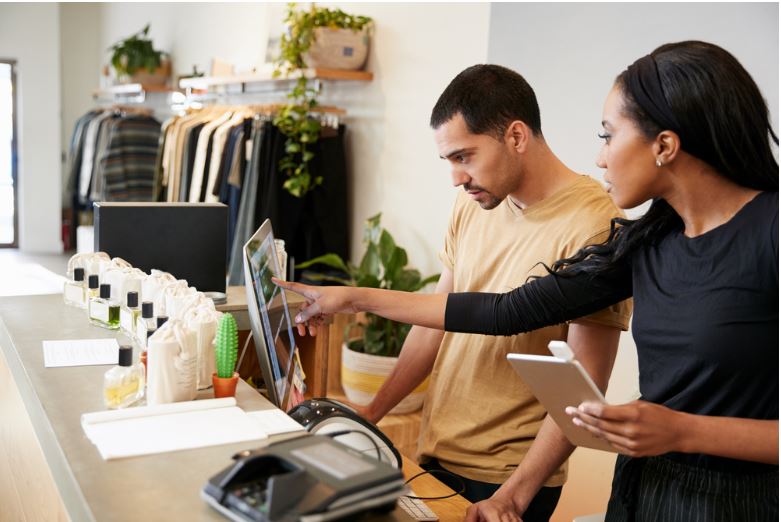In the age of digitisation, the retail sector has seen a massive amount of change in a very small period of time. But as was expected, the adaptability of this industry speaks volumes of the evolving relationship between retail and e-commerce, its tech-savvy sister. Although e-commerce has taken the global market by storm, the technological advancement of retail has ensured that this age-old industry is here to stay! Here’s how technology has propelled retail into the future.
 Business management systems
Business management systems
From digital inventory management to the quintessential scheduling software, the incorporation of business management systems into retail spaces has undoubtedly revolutionised the way retailers operate on a day-to-day basis. These two different types of software work in similar ways, as they both aid in ensuring that retail spaces never fall short of either stock or staff.
Prior to the 21st century, retail managers would be tasked with more frequent stock-taking responsibilities, as well as having to independently manage the process of rostering on staff and keeping track of any leave applications. Alongside this, a reputable scheduling software like the one offered by Deputy, in particular, can also provide you with extra data such as the total number of hours across all your employees per week as well as the total costs of their salaries, so that you’ll have a more ready understanding of your company’s gross income. In the past, calculating your earned value metrics was a similarly arduous task to manually creating weekly staff rosters. Now, the highly time-consuming nature of these responsibilities has been greatly alleviated by these business management systems.
Digital signage and merchandising
Eliminating retail waste is rapidly becoming a priority for a lot of business owners, especially now during the war on plastic. A lot of stores across the nation have benefited from implementing charitable product recycling programmes or other incentives for consumers to purchase smaller items, either to raise funds for an external organisation or simply to move stock at a faster rate. Digital signage and using official merchandising resources provided by your suppliers have been a fantastic addition to retail spaces when it comes to reducing retail waste, amongst a plethora of other positives.
Unlike paper posters or plastic banners, balloons, and other wasteful single-use decorations, digital signage will provide your store with an established look and feel, allowing you to advertise without having to worry about catching the eye. Utilising digital signs in your store will also eliminate the need for messy banners and other decorations that can often fall and look disorganised, or adversely draw focus away from your shelves rather than lead customers to particular products. The efficacy of digital signs on inspiring impulse purchases, as well as promoting customer satisfaction, has also been noted.
Retail apps
A lot of big-name fast food places have released their own apps that primarily comprises of a game for potential customers to play, with higher scores resulting in instore prizes. Whilst apps like these have been effective in the hospitality industry, there’s been recent evidence to suggest that even high-end retailers can also benefit from creating their own mobile apps.
Using an app alongside your traditional brick-and-mortar businesses can increase brand recognition, sales, and potentially even foot traffic if that’s what you want the app to achieve. The flexibility that inherently accompanies mobile apps is what makes these little tools so valuable for independent business owners and larger companies alike. You can directly interact with your customers 24/7, and fully utilise your brand identity in the process.
~
Remember that the edge up that retail will always hold on e-commerce is customer service. The majority of consumers still prefer purchasing pricey products like technological goods and high-end clothing from reputable retailers, because they can physically interact with both the product as well as the person selling that product. If your retail space is equipped with a positive atmosphere, cheery staff, and these game-changing tidbits of industry tech, then there’ll be next to nothing keeping your retail business from flourishing.

